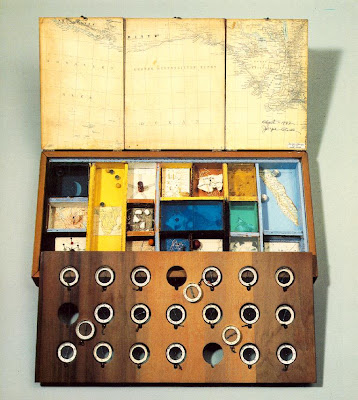 This image has given me a idea for my fmp project, but I will be changing parts of it.
This image has given me a idea for my fmp project, but I will be changing parts of it. I just like this because of the different materials used it just got that textured feeling to this 3D object.
I just like this because of the different materials used it just got that textured feeling to this 3D object.Joseph Cornell was born December 24, in the year 1903, in Nyasa New York. From 1917 to 1921, he attended Phillips Academy, Andover, Massachusetts. He was an avid collector of memorabilia and, while working as a woolen-goods salesman in New York until 1931, developed his interests in ballet, literature, and opera.
In the early 1930s, Cornell met Surrealist writers and artists at the Julian Levy Gallery, New York, and saw Max Ernst’s collage-novel La Femme 100 têtes. Cornell’s early constructions of found objects were first shown in the group exhibition Surrealism at Levy’s gallery in 1932. From 1934 to 1940, Cornell supported himself by working as a textile designer at the Traphagen studio in New York. During these years, he became familiar with Marcel Duchamp’s readymades and Kurt Schwitters’s box constructions. Cornell was included in the 1936 exhibition Fantastic Art, Dada, Surrealism at the Museum of Modern Art, New York. Always interested in film and cinematic techniques, he made a number of movies, including the collage film Rose Hobart (ca. 1936) and wrote two film scenarios. One of these, Monsieur Phot (1933), was published in 1936 in Levy’s book Surrealism.
Cornell’s first two solo exhibitions took place at the Julian Levy Gallery in 1932 and 1939, and they included an array of objects, a number of them in shadow boxes. During the 1940s and 1950s, he made Aviary, Hotel, Observatory, and Medici boxes, among other series, as well as boxes devoted to stage and screen personalities. In the early 1960s, Cornell stopped making new boxes and began to reconstruct old ones and to work intensively in collage. Cornell retrospectives were held in 1967 at the Pasadena Art Museum and the Solomon R. Guggenheim Museum, New York. In 1970, the Metropolitan Museum of Art in New York mounted an exhibition of his collages. Cornell died December 29, in the year 1972.
No comments:
Post a Comment